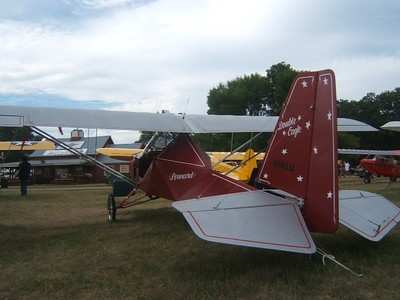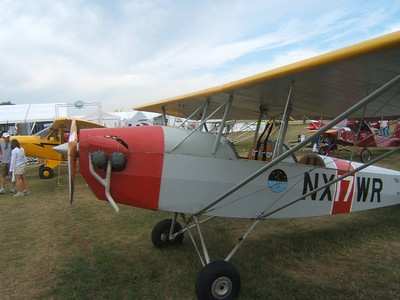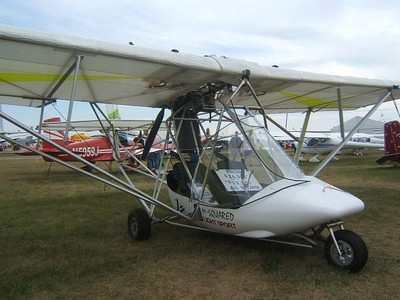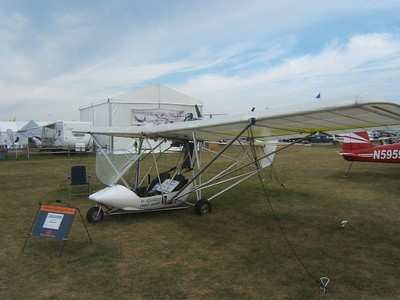Exploring Low(er) Cost LSA Options
by ANN Correspondent Scott Wagner
Since the inception of the Sport Pilot and Light Sport Aircraft
regulations, we've been promised that they would lower the cost of
learning to fly. Integral to lowering the cost is for manufacturers
to offer lower prices on their aircraft, so a larger segment of the
population can afford to buy and maintain an airplane.

While we have seen some improvement in this area -- and
certainly LSAs are cheaper than their larger, certified cousins --
many feel the price tag on a new, ASTM certified Special Light
Sport Aircraft (S-LSA) is still beyond their reach. So far, demand
for S-LSA has far exceeded supply, and many manufacturers have
significant backlogs in their order books.
Fact is, as long as it remains a sellers market, manufacturers
can, and will charge a premium for their product.

There is hope, especially for those who aren't afraid to dig in
and get their hands dirty. Dozens of Experimental-Amateur Built
aircraft designs fit the LSA mold perfectly. Homebuilts, as they
are often called, are available in several forms. Many are
available as a kit, where the manufacturer does some degree of work
prior to shipping to the builder.
For the truly industrious builder, many planes can be built
purely from plans and raw materials. This is often the most
economical road to aircraft ownership, but is also the most labor,
time and skill intensive. Often, kits and ready to use parts are
available from plans providers, especially for difficult to build
parts.
At EAA AirVenture Oshkosh, I decided to investigate some of the
lower priced ways to get into the sky. Powered Parachutes and
Trikes can regularly be found for under $10,000, especially on the
used market, so I wanted to focus on fixed-wing LSA. I stopped by
the LSA Mall to see what I could find.
On the Experimental side, I checked out the Double Eagle and the
Pietenpol. Both feature traditional tube and rag construction, with
conventional controls and open cockpits. They differ in their
cockpit layout and powerplant options.

The Double Eagle (shown above) was originally designed as a two
seat, side-by-side trainer for its single seat ultralight
predecessor, the Legal Eagle. The Double Eagle represents one of
the most affordable and simplest aircraft on the market. The
prototype was built for $5,000, and designer L.E. Milholland
believes that most builders will be have a complete airplane for
under $7,000.
Laser cut metal fittings and welded fuselages are available for
the airplane. Even if a builder takes advantage of every
pre-fabricated part available, including the engine, the finished
product should fly for around $12,500. To date, around 250 sets of
plans have been sold, and several are flying.
The model has an active Yahoo group devoted to construction and
flying the budget bird. With an empty weight of just under 400
pounds, and a gross of 900, the Double Eagle has a generous
payload. "Basically, if any two people will fit into the airplane,
it will fly." said Milholland.

The Pietenpol is another aircraft that attracts the thrifty.
Hundreds, if not thousands Air Campers -- as the aircraft is less
commonly known -- are flying around the world. That's not
surprising, given The Piet's almost 80 year history.
With its open cockpit, tandem seating arrangement and parasol
wing, one can easily daydream that you are an Airmail pilot, flying
the line in a WACO, Fleet or Jenny. The Pietenpol is a purely
plans-built aircraft, in that there are no kits available. There is
some availability of components from individual providers, but the
Pietenpol (shown above and below) is essentially a
build-it-yourself project.

Currently, there are several providers of plans, including
designer Bernie Pietenpol's son and grandson. You can locate
information on any of the providers through a quick search online.
Pietenpols have been build for as little as $3500, although they
relied heavily on scrounged materials. A better estimate would be
in the $10-12,000 range, and about 1000 hours of construction
time.
Moving on to the S-LSA department, we discovered the M-Squared
Breese 2 (shown below). Originally designed by Paul Mather as an
ultralight trainer, the Breese 2 is expected to receive its ASTM
certification as an S-LSA within the next 30 days. First delivery
will occur immediately, as the company has supplies on hand for
several airframes. It will take approximately a week to prepare
each individual airplane for delivery. Each is test flown by the
designer, and company instructors provide up to five hours of
transition training to get the buyer properly checked out in the
airplane. "Paul knows his product best, so he's the best person to
test fly the plane and determine that its safe", said M-Squared
dealer and ultralight flight instructor Sharon Westcott.

With a pricetag of $32,995, the Breese 2 comes complete with a
BRS airframe parachute, ELT, digital engine monitoring instruments,
and analog airspeed, altimeter, VSI, and compass. While the Breese
2 will not be certified for night flight, it does have dual
landings lights for collision avoidance purposes.
How do they keep the price down? Simplicity of design, a simple
structure, and use of the less costly Rotax 582 versus the 912,
Jabiru or Continental O-200. Other cost savings come from the
custom made Dacron sleeve used to cover the wing, which is designed
for easy installation, and eliminates hours of labor normally
associated with a rag wing.
One interesting design point of the Breese 2 is its removable
fiberglass pod. The entire three-piece pod can be removed, by the
owner, and still flown as an S-LSA. All together, there are about
250 M-Squared aircraft flying, spread out amongst the single seat
Breese, the two-seat ultralight trainer Breese 2, which is the
exact same aircraft soon to be certified as an S-LSA.

Flying will probably never be an inexpensive hobby, that much we
know. These options, as well as any number of other choices are a
good indication that costs can be reduced, through creativity, hard
work and determination.
 ANN's Daily Aero-Term (04.20.24): Light Gun
ANN's Daily Aero-Term (04.20.24): Light Gun Aero-News: Quote of the Day (04.20.24)
Aero-News: Quote of the Day (04.20.24) ANN's Daily Aero-Linx (04.21.24)
ANN's Daily Aero-Linx (04.21.24) Aero-News: Quote of the Day (04.21.24)
Aero-News: Quote of the Day (04.21.24) ANN's Daily Aero-Term (04.21.24): Aircraft Conflict
ANN's Daily Aero-Term (04.21.24): Aircraft Conflict









